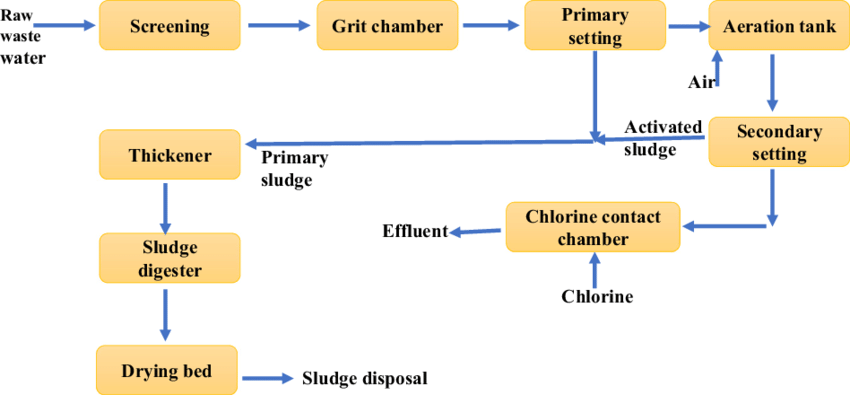All About Reclaim Waste
All About Reclaim Waste
Blog Article
What Does Reclaim Waste Mean?
Table of ContentsThe 7-Second Trick For Reclaim WasteNot known Details About Reclaim Waste The Best Strategy To Use For Reclaim WasteHow Reclaim Waste can Save You Time, Stress, and Money.10 Easy Facts About Reclaim Waste Explained
Residential sewer waste refers to the waste and products from a household septic tank. The correct management and disposal of residential sewage waste need fluid waste to be moved to a sewer treatment plant where the correct techniques and equipment are applied to detoxify and dispose of waste.
Industrial waste often consists of potential dangers, such as flammable materials or a mixture of liquid and strong waste products, and needs a more innovative and in-depth disposal process. The disposal of business waste generally includes the purification of waste before transportation to make certain safe and appropriate disposal. Hazardous waste is created from byproducts and overflow of commercial procedures and manufacturing.
This kind of waste can not make use of the exact same sewer monitoring transport or procedures as septic or commercial liquids. The hazardous waste administration procedure needs the examination and testing of liquid waste before it goes through the disposal process (liquid waste disposal). Drainage waste is the fluid waste that originates from overflow and excess stormwater in extremely inhabited areas or cities
Drainage waste can cause contamination and flooding if not dealt with properly. Making sure correct waste monitoring can stop disasters and minimize environmental harm.
Getting My Reclaim Waste To Work
Get in touch with PROS Services today to discover our waste management and disposal services and the appropriate ways to look after the liquid waste you produce.
(https://www.blogtalkradio.com/reclaimwaste1)Do you recognize what occurs to your water when you end, flush the commode or drain the washing device? No? Well, it's worth knowing. This supposed 'wastewater' is not only a vital source but, after therapy, will be launched to our land, waterways or the sea. Used water from commodes, showers, baths, cooking area sinks, laundries and commercial processes is recognized as wastewater.

water utilized to cool equipment or clean plant and devices). Stormwater, a form of wastewater, is drainage that moves from farming and metropolitan locations such as roof coverings, parks, gardens, roads, courses and rain gutters into stormwater drains pipes, after rain. Stormwater flows neglected directly to local creeks or rivers, eventually getting to the sea.
Reclaim Waste Can Be Fun For Anyone
In Queensland, many wastewater is treated at sewer therapy plants. Wastewater is delivered from residential or industrial sites with a system of sewage systems and pump stations, understood as sewage reticulation, to a sewage therapy plant. Regional governments construct, maintain and run most sewage therapy plants. Operators are licensed under the Environmental Management Act 1994 to release cured wastewater at an appropriate environmental requirement into rivers.
The Department of Natural Resources suggests neighborhood federal governments concerning managing, operating and maintaining sewage systems and therapy plants. In unsewered locations, city governments might need householders to mount private or home sewage therapy systems to deal with domestic wastewater from toilets, kitchen areas, shower rooms and washings. The Department of Natural Resources authorizes the usage of home systems when they are proven to be reliable.
In some brand-new subdivisions, treatment of some stormwater to remove clutter, sand and crushed rock has actually begun making use of gross contaminant catches. Wastewater treatment takes place in four stages: Gets rid of solid matter.
Wastewater then streams into huge containers where solids work out and are gotten rid of as sludge. Grease and scum are skimmed from the surface area. Utilizes tiny living microorganisms called micro-organisms to damage down and eliminate continuing to be liquified wastes and fine bits. Micro-organisms and wastes are included in the sludge. Gets rid of nitrogen and phosphorus nutrients that can trigger algal blossoms in our rivers and intimidate marine life.
All about Reclaim Waste
Nutrient removal is not offered at all sewer therapy plants because it needs expensive specialist equipment. Clear liquid effluent created after therapy may still consist of disease-causing micro-organisms - my website liquid waste disposal melbourne.

Most wastewater moves into the sewage system. Under the Act, local governments provide approvals and permits for environmentally pertinent activities (Ages) involving wastewater launches that could have a regional impact.
Facts About Reclaim Waste Uncovered
Monitoring supplies valid details about water high quality and can verify that permit problems are being fulfilled. The details gotten via surveillance provides the basis for making water quality choices.
Report this page